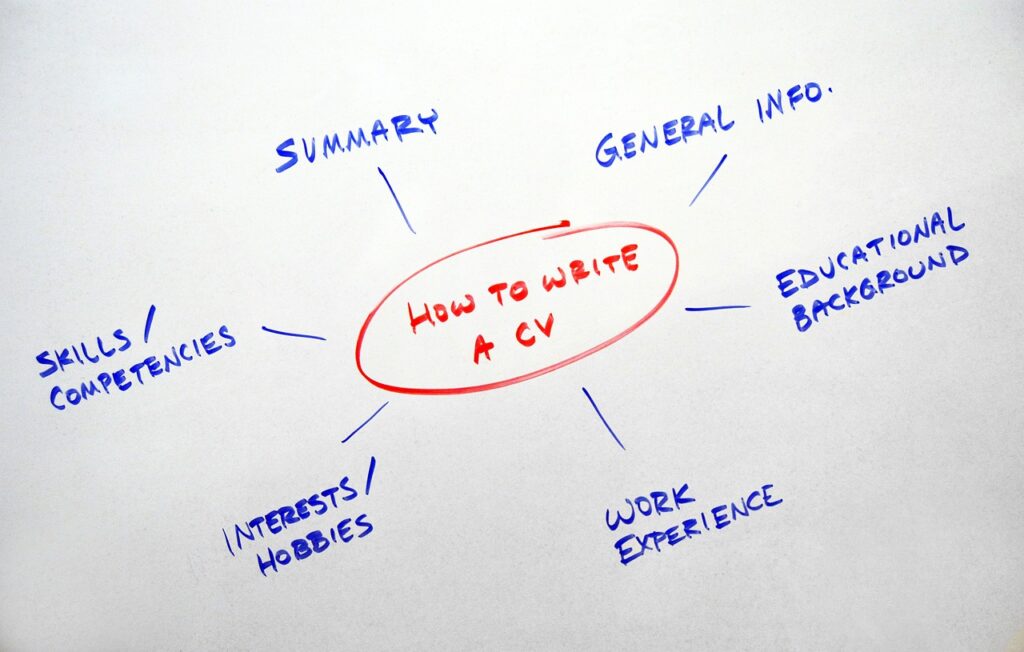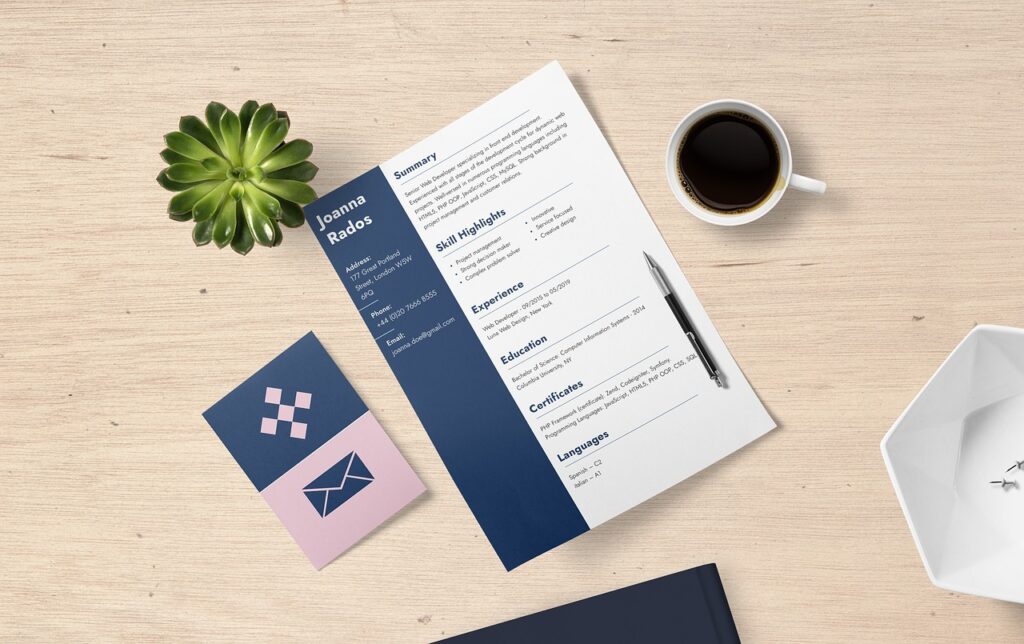Introduction
In today’s competitive job market, creating a CV that stands out to recruiters and passes through an Applicant Tracking System (ATS) is crucial. Many companies now rely on ATS software to streamline their recruitment processes, scanning hundreds of CVs and filtering them based on specific keywords, formatting, and qualifications. If your CV isn’t ATS-friendly, it may never reach the hands of a human recruiter, no matter how qualified you are for the role.
So, how do you ensure your CV makes it through this automated gatekeeper? This guide will break down the essential steps to writing an ATS-friendly CV. From understanding how ATS works to using the right keywords and avoiding common formatting pitfalls, you’ll learn how to optimize your CV for success. Whether you’re a seasoned professional or just entering the job market, these tips will help you craft a CV that both ATS and hiring managers will love.
What is an ATS-Friendly CV?
An ATS (Applicant Tracking System) is an application employers use to manage their recruitment process efficiently. Designed to automate the initial stages of recruitment, ATS sorts, filters, and ranks job applications based on criteria such as keywords, skills, and qualifications specified in the job description. If you don’t optimize your CV for ATS, it won’t reach a human recruiter, significantly reducing your chances of landing an interview. This underscores the importance of understanding and implementing ATS-friendly practices in your CV.
An ATS-friendly CV is formatted and written in a way that ensures it gets past these automated filters. This means using a clean and simple structure, avoiding graphics or images, and incorporating relevant keywords. The goal is to ensure your CV passes the ATS and ranks high enough to catch recruiters’ attention.
Why Most CVs Get Rejected by ATS
While you may have an impressive background, your CV can still get rejected by an ATS for several reasons:
- Improper Formatting: ATS systems often struggle with complex or unconventional formatting. For example, tables, columns, and text boxes can make your CV unreadable to the ATS software. Stick to a simple format with standard margins, headings, and bullet points.
- Lack of Relevant Keywords: ATS scans for specific keywords mentioned in the job description. If your CV does not include these keywords, it may not be relevant. Using exact terms and phrases that align with the job posting is crucial.
- Unconventional Fonts and Characters: Using decorative fonts, special characters, or symbols can cause errors in the ATS parsing process. Fonts like Times New Roman, Arial, and Calibri are standard and safe choices.
- Critical Information in Headers or Footers: ATS may not recognise or read information stored in headers or footers, which could mean essential details like your contact information.
- Inconsistent Language: Using different terms or jargon that don’t match the job description can confuse ATS. Consistency in language helps the ATS accurately assess your fit for the position.
Key Elements of an ATS-Friendly CV

To craft a CV that effectively passes through ATS, consider these essential elements:
- Incorporate Relevant Keywords: The most crucial element of an ATS-friendly CV is the strategic use of keywords. These are the specific terms and phrases that align with the job posting and are used by the ATS to determine the relevance of your CV. Carefully review the job description to identify these critical terms related to skills, experience, and qualifications. Integrate these keywords naturally throughout your CV, particularly in sections like ‘Professional Experience,’ ‘Skills,’ and ‘Education’.
- When it comes to formatting your CV for ATS, simplicity is vital. Keep your formatting clear and straightforward. Use standard fonts and uniform font sizes (10 -12 points for body text, slightly larger for headings), and avoid using tables, text boxes, or graphics. Break down information using bullet points for easy scanning. This approach ensures that the ATS reads and understands your CV easily.
- Defined Sections: Organize your CV with clear, well-labeled sections. Standard sections include Contact Information, Professional Experience, Education, Skills, Certifications, and Achievements. This helps ATS recognise and categorise your qualifications.
- Straightforward Language: Use simple, concise language that is easy for both the ATS and human recruiters to understand. Avoid overly complex sentences or jargon unless they are industry-specific terms in the job description.
- Consistent Terminology: Use the same terminology and phrases in the job description. If the job posting mentions “project management” as a key skill, use this exact term rather than synonyms like “program management” or “initiative coordination”.
Learn more: How to Craft a Compelling Cover Letter That Shows Your Passion
Use of Keywords to Pass ATS
Keywords are fundamental to ensuring your CV gets through ATS. Here’s how to use keywords effectively:
- Extract Keywords from the Job Description: Carefully analyse the job description to identify the most relevant keywords. These might include specific skills, job titles, tools, certifications, or industry terms.
- Use Both Broad and Specific Keywords: Including a mix of broad (e.g., ‘management’) and specific keywords (e.g., ‘agile project management’) is essential. This combination helps capture different aspects of the job requirements, increasing the chances of your CV being recognised by the ATS.
- Incorporate Keywords Naturally: Avoid keyword stuffing, which can make your CV unnatural. Instead, weave keywords organically into your sentences, particularly in your professional summary, skills list, and job descriptions.
- Place Keywords Strategically: Focus on placing keywords in areas that the ATS is likely to scan first, such as job titles, headings, and the opening lines of bullet points under each job role.
Formatting Tips for an ATS-Friendly CV

- Avoid Graphics or Images: ATS cannot interpret visual elements like graphics, logos, or images. Stick to plain text to ensure the software easily reads your CV.
- Choose Standard Fonts: Use fonts that are universally recognised, such as Arial, Calibri, or Times New Roman. These fonts are clear and readable by ATS.
- Use Consistent Font Sizes and Styles: Keep font sizes between 10-12 points for body text, with slightly larger sizes for headings. Avoid italics, underlining, or any other styles that ATS might misread.
- Simplify Your Layout: Use a single-column layout to prevent ATS parsing errors. Multi-column formats can confuse ATS software, leading to missed information.
- Use Standard Section Headings: Common headings like “Work Experience,” “Education,” and “Skills” help the ATS understand the structure of your CV. Avoid creative or non-standard headings that the system may find hard to recognise.
- Save in the Right Format: Unless specified otherwise, save your CV in a Word document (.doc or .docx) or plain text (.txt) format. PDFs can be problematic for some ATS software.
Also Read: How to Talk About Your Skills in an Interview
Common Mistakes to Avoid in an ATS-Friendly CV
Many candidates make avoidable mistakes that result in their CVs being filtered out by ATS. Here are some of the most common errors:
- Using Fancy Fonts or Graphics: While making your CV visually appealing may be tempting, fancy fonts and graphics can cause readability issues for ATS. Stick to standard fonts and avoid using images or graphics that could interfere with the scanning process.
- Not Tailoring Your CV to the Job Description: Each job has specific requirements; a generic CV won’t always cover these nuances. Failing to tailor your CV to the job description can reduce your chances of passing through ATS filters. Ensure your CV reflects the essential qualifications and skills mentioned in the job posting.
- Including Important Information in Headers or Footers: Vital information, like your name and contact details, should be in the document’s main body, not headers or footers.
- Using Uncommon Abbreviations or Acronyms: Always spell abbreviations or acronyms to ensure clarity the first time they appear in your CV.
- Keyword Stuffing: Overloading your CV with keywords can make it sound unnatural and may trigger red flags in ATS. Maintain a natural flow while incorporating essential terms.
- Poor File Naming: Use a precise and professional filename for your CV, like “FirstName_LastName_CV.docx,” to make it easier for recruiters to find and identify.

Tools and Resources to Create an ATS-Friendly CV
Creating an ATS-friendly CV can be streamlined using various tools and resources designed to optimise your application:
Jobscan: Offers a detailed report on how well your CV matches the job description and provides specific recommendations for improvement.
Resunate: Allows you to analyse your CV against job descriptions and suggests optimisation tips.
TopResume ATS Checker: Provides insights into how your CV performs against ATS criteria, with suggestions to enhance compatibility.
Best Practices for Using Keyword Analyzers
Keyword analysers help compare your CV against job descriptions to identify and optimise for the most relevant terms. These tools can help you find industry-specific keywords. Focus on keywords frequently appearing in the job posting and ensure they integrate seamlessly into your CV.
- Start with the Job Description: Use the description to identify essential skills, qualifications, and responsibilities, and ensure those terms are featured in your CV.
- Integrate Keywords Naturally: Avoid keyword stuffing. Ensure that keywords flow naturally within your CV, appearing in your job descriptions and skill sections without repetition.
- Use Both Broad and Specific Keywords: Balance general terms like “management” with specific skills or tools, such as “agile project management” or “JIRA,” for a more targeted approach.
- Target Hard Skills and Certifications: Highlight technical expertise, software proficiency, and relevant certifications in your CV to increase your chances of passing ATS filters.
- Customize for Each Job Application: Tailor your CV for each job by comparing it with the specific job description and adjusting keywords to align with the role’s requirements.
FAQs for How to Write an ATS-Friendly CV
1. How many pages should an ATS CV be?
Ideally, keep your ATS CV to one or two pages, depending on your experience level. Conciseness ensures readability and keeps vital information within the view of ATS and recruiters.
2. How can I know if my CV is ATS-friendly?
Use free ATS scanning tools like Jobscan, Resunate, or TopResume to check your CV’s compatibility and receive feedback.
3. Can I use bullet points and lists in an ATS-friendly CV?
Bullet points are highly recommended as they break down information into digestible chunks, which is easy for ATS to parse and assess.
4. What are the best keywords to use in an ATS-friendly CV?
Focus on keywords directly from the job description, such as specific skills (e.g., “data analysis”), job titles (e.g., “marketing manager”), qualifications, and industry-specific terminology.
Read next: How to Overcome Interview Anxiety and Project Confidence.






[…] See Also: How to Write an ATS-Friendly CV […]
[…] See Also: How to Write an ATS-Friendly CV […]
[…] See Also: How to Write an ATS Friendly Cv […]
[…] See Also: How to Write an ATS-Friendly CV […]
[…] Read also: How to Write an ATS-Friendly CV […]